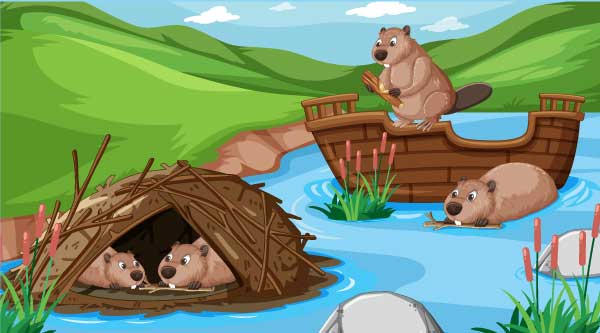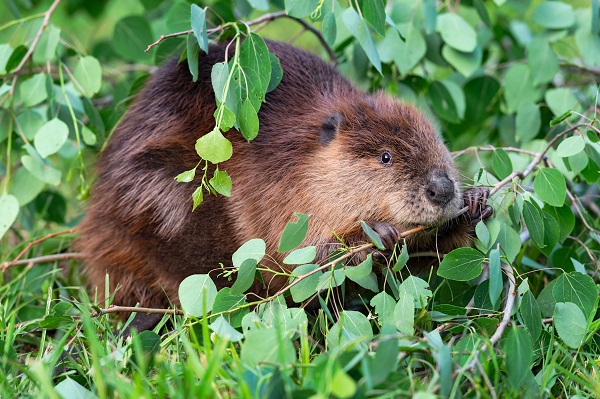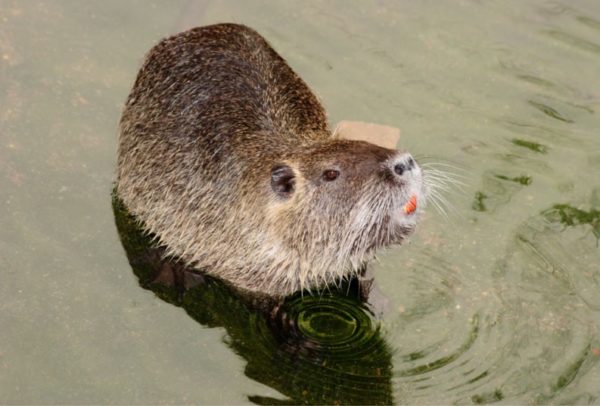Celebrating International Beaver Day on April 7th!
An estimated 60 to 400 million beavers once lived in North America, but the European demand for beaver pelts for clothing, most notably hats, almost drove the mammal to extinction by the mid-19th century.
Where I live in Oregon, we love beavers so much that Oregon State University has this mammal as its mascot! And millions of years ago during the Pleistocene era, a now-extinct species of giant beaver lived here, with its massive body reaching eight feet long. Can you imagine seeing that?!
Beavers fulfill vital ecological roles by creating valuable wetlands and ponds. The dams built by these “ecosystem engineers” slow streamflow, raise the water table, and reduce downstream flooding and erosion. Plants and sediment in a beaver pond improve water quality.
Beavers help birds, fish, and other wildlife and native plants to thrive. Their habitats also serve as aquatic refuges during wildfire and also store carbon. Aside from humans, no other animal exerts such a far-reaching impact on the landscape as does the beaver, Castor canadensis.
A Beaver Tale
Below is a story about an industrious beaver I was lucky to observe while working in the Colorado Rockies.
Each evening at dusk I take a stroll to burn off dinner in hopes of having room for dessert. Tonight I crossed a bridge over the East River and followed a tributary upstream. I soon happened upon a small pond, then a larger pond, and finally an enormous pond that rivaled the size of an Olympic swimming pool. As my eyes crested the top of the pond’s earthen dam, I caught sight of a disturbance in the water. I quietly tiptoed to the side of the pond and crouched down among the corn lilies.
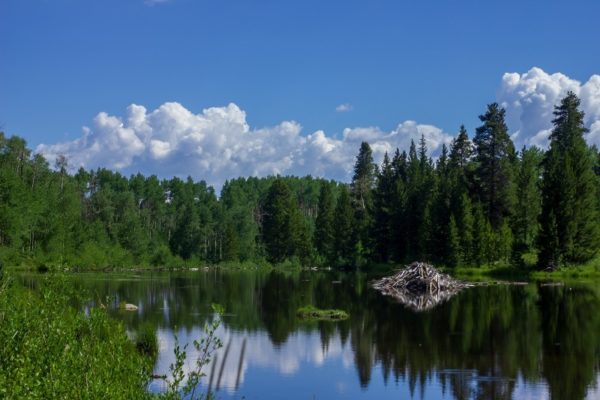
A large nose broke the water’s surface, then eyes, then ears. A beaver! I held my breath and even tried not to blink, as the animal swam lazily in my direction. It waved its snout and sniffed the air, but was either unsuccessful at identifying this intruder, or decided to oblige an audience. It dove under without even giving a warning slap of its tail. I figured I’d seen the last of this creature, but stayed motionless for a while, enjoying the alpenglow on the far peaks and their reflections in the quiet pond. I noticed a formidable beaver lodge at the pond’s edge. It was completely vegetated as if it had been there forever. I envisioned in my imagination that this beaver had spent its entire life here and had a mate nestled cozily in their home.
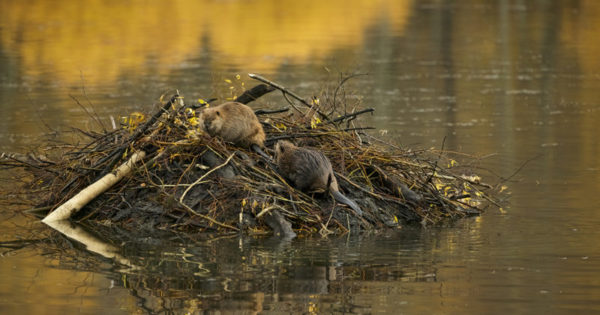
Surprise! The beaver resurfaced some distance away, swimming towards the dam with an object in its mouth. The animal carefully placed its prize — a branch — on the dam, then turned, swam, dove, and surfaced again with a larger object. It appeared to be a mass of mud, which it placed on the dam and methodically tamped down with its front paws.
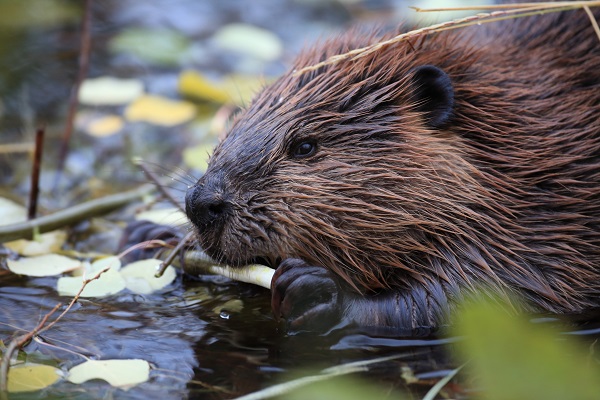
The beaver repeated this sequence of fetching and placing various building materials about ten times while I silently watched from the water’s edge. Sometimes the animal would climb completely out of the water on top of the dam and vigorously shake its head, just as my dog does, presumably to clear the water from its ears. Its face looked exactly like a marmot’s — a close relative — but its body was much huskier, like a badger’s. Several times it surfaced with a long straight aspen limb, climbed on top of the dam, and used both its front paws to wiggle the limb into a vertical position, deep within the dam’s mud and stick matrix. I was amazed at the level of care and planning that appeared to go into the animal’s maintenance of the dam and I wondered whether it spends this much time each and every night building and repairing the structure.
All too soon the sun was setting, accompanied by a cool breeze sweeping up the valley. I reluctantly rose to leave. Glancing back, I watched the beaver as it swam silently and gracefully towards its lodge, creating a wake of gentle ripples across the pond.
BEAVER SKETCHING WORKSHOP
Watch my beaver biology and sketching workshop HERE


